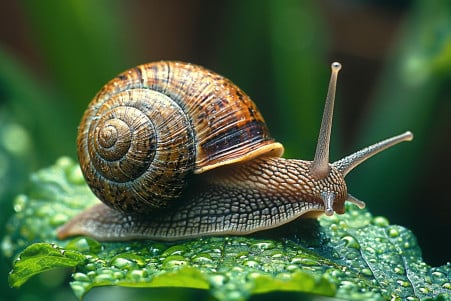How Do Snakes Reproduce? An In-Depth Explanation of Snake Egg-Laying
29 March 2024 • Updated 29 March 2024

Although snakes are often thought of as animals that give birth to live young, many species actually use some pretty interesting methods to lay eggs. After developing a clutch of soft-shelled eggs inside their bodies, female snakes find a warm, humid place to lay and incubate their eggs for several weeks or months until they're ready to hatch.
This article will take a deep dive into the scientific research and personal observations that have uncovered the complex behaviors and physiological changes that allow these reptiles to reproduce by laying eggs. From the careful selection of a nesting site to the changes that take place inside the eggs, this article will shed light on the fascinating reproductive process of egg-laying snakes in both the wild and in captivity.
How do snakes lay eggs?
How Snakes Lay Eggs: From Fertilization to Nesting
Once fertilization has occurred, additional layers are added to the snake eggs by the shell glands in the oviduct to create a tough yet flexible leathery shell, according to Encyclopaedia Britannica. This shell is porous, allowing gases and liquids to pass through, so the embryo can breathe and yet still retain the moisture it needs to develop.
Snakes lay their eggs using the cloaca, a special chamber located near the base of the tail, to expel the entire clutch of eggs, according to naturalists at the Effie Yeaw Nature Center. The cloaca is an opening that is used for the digestive, urinary, and reproductive systems.
While many snake species leave their eggs as soon as they are laid, some will stay with the eggs to protect them from predators, according to Britannica. A small number of snake species, such as pythons, even brood their eggs, using their bodies to keep the eggs warm and help them develop.
In contrast to the hard-shelled eggs of birds, snake eggs have a leathery, pliable shell that is soft to the touch and less likely to break or shatter, according to this video from Britannica and naturalists. This allows the eggs to be laid in small spaces and even mold to the shape of the space they are laid in. With this unusual biological process and the variety of nesting habits, snakes have evolved a number of ways to ensure that their eggs are successfully laid and their offspring are successfully born.
Maternal Care: Brooding and Nest Protection Strategies
Although most snakes leave their eggs after they're laid, some snakes show an extraordinary amount of parental care, according to researchers at Arizona State University. Some species, especially pythons, exhibit brooding, in which the female stays with the clutch to help maintain the nest environment and regulate the temperature for incubation.
Brooding pythons, such as the Burmese python, can even produce endogenous heat to keep their eggs warm for up to two months, as Jake Brashears of ASU noted. This impressive ability comes at a high cost, as the brooding females will not eat or drink during this time and lose a lot of weight.
In addition to brooding, maternal care also includes protecting eggs from predators. A study in the Journal of Experimental Biology showed that the tight coils of brooding pythons create a hypoxic environment, which can be detrimental to the embryos. However, the females will adjust their coils to allow for better gas exchange, which helps the embryos survive. This balance between protecting the eggs and ensuring they're properly incubated is important for the survival of snake eggs.
Predation and Other Dangers: How Snake Eggs Avoid Being Eaten
Snakes eggs are preyed upon by a variety of animals in their natural environments, including other snakes, birds, and small mammals. In one study, it was discovered that oophagous (egg-eating) snakes are typically long, which enables them to eat eggs with a small diameter. This indicates that the relative size of the prey is a major factor in these interactions.
In areas where there are many sea turtle nests, egg-eating snakes like the Oligodon formosanus are a major threat to snake eggs. To help protect themselves from this threat, some snake species have evolved synchronous hatching, which reduces the risk of predation for individual snakes and allows them to overwhelm predators, as research has shown.
In fact, reptile embryos can even communicate with one another and coordinate their development to ensure they hatch at the same time, a phenomenon that research suggests may have evolved as a defense mechanism. Meanwhile, the clustering and attachment of snake eggs, as documented in the water snake Natrix maura, may have evolved to prevent eggs from rolling and becoming more susceptible to predators. These adaptations show how snakes have evolved a wide range of ways to protect their offspring from the many threats they face.
Incubation and Embryonic Development: From Egg to Hatchling
While the eggs are being laid, the embryos of the snake go through a series of developmental stages during incubation. According to Encyclopaedia Britannica, there is often a delay between fertilization and egg deposition, with many egg-laying reptiles having a mechanism to temporarily halt development until the eggs are laid.
After the eggs are laid, the length of the incubation period and the speed of embryonic development are largely dictated by temperature. Since reptiles are ectotherms, the embryos are at the mercy of the temperature fluctuations of their environment, which can greatly affect the speed at which they develop. Britannica explains that development is slower in cooler temperatures and faster in warmer temperatures, although both extremes can be deadly.
To hatch from the egg, snake hatchlings have an "egg tooth," a specialized structure that is a premaxillary tooth that grows forward from the mouth, according to Britannica. This sharp point helps them pierce the membranes and shell when they are ready to emerge.
In fact, a study published in BioScience has shown that reptile embryonic development follows an exponential growth curve, with the most rapid growth happening in the second half of the incubation period. This burst of growth is an important adaptation that helps snake hatchlings break through their tough, leathery eggshells and start their lives outside of the egg.
Differences in Egg-Laying Strategies: Adapting to Different Environments
It turns out that snake species have evolved a wide variety of egg-laying strategies to fit their particular ecological niches, according to ZME Science. Although about 70% of all snake species are oviparous, or egg-laying, the number of eggs in each clutch can vary dramatically. For example, the clutches of smaller colubrid snakes usually consist of 10-30 eggs, while the largest pythons can lay more than 100 eggs at a time, says Reptile.Guide.
The nesting sites of egg-laying snakes are also quite varied, from protected areas to underground burrows to termite mounds, according to Reptile.Guide. On the other hand, a large minority of snake species, including boas and rattlesnakes, give birth to live young rather than laying eggs, as pointed out by ZME Science.
A study in the Journal of Experimental Biology explains that many aspects of snake reproduction, including reproductive mode, frequency, and mating, enable females to have a great deal of control over the genotypes and phenotypes of their offspring. This maternal investment plasticity is a critical adaptation that has allowed snakes to successfully colonize a wide variety of habitats all over the planet.
Conclusion: The Fascinating Reproductive Biology of Oviparous Snakes
Clearly, the reproductive biology of snakes is complex and involves many adaptations. From nest site selection and egg laying to brooding and embryonic development, each step is important.
Snakes have evolved a variety of ways to protect their eggs and ensure the survival of their young. This knowledge of these behaviors and physiological processes can help us understand the evolution of reptiles. Future studies can continue to expand our understanding of the fascinating reproductive biology of oviparous snakes.


